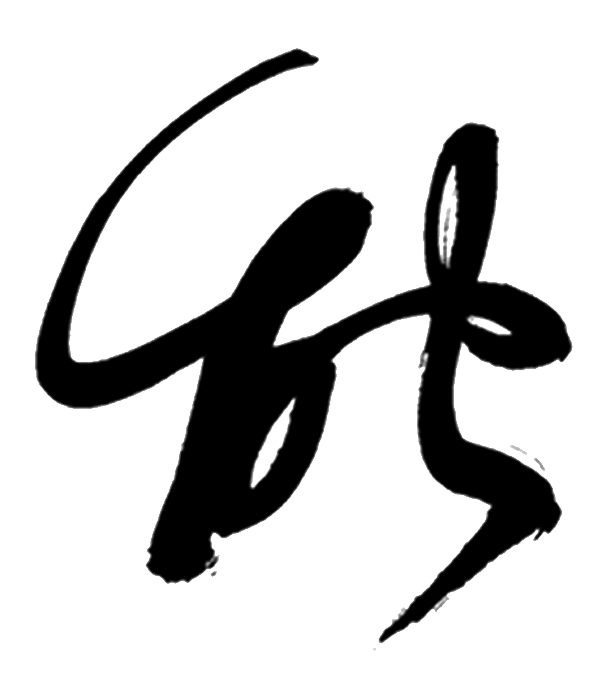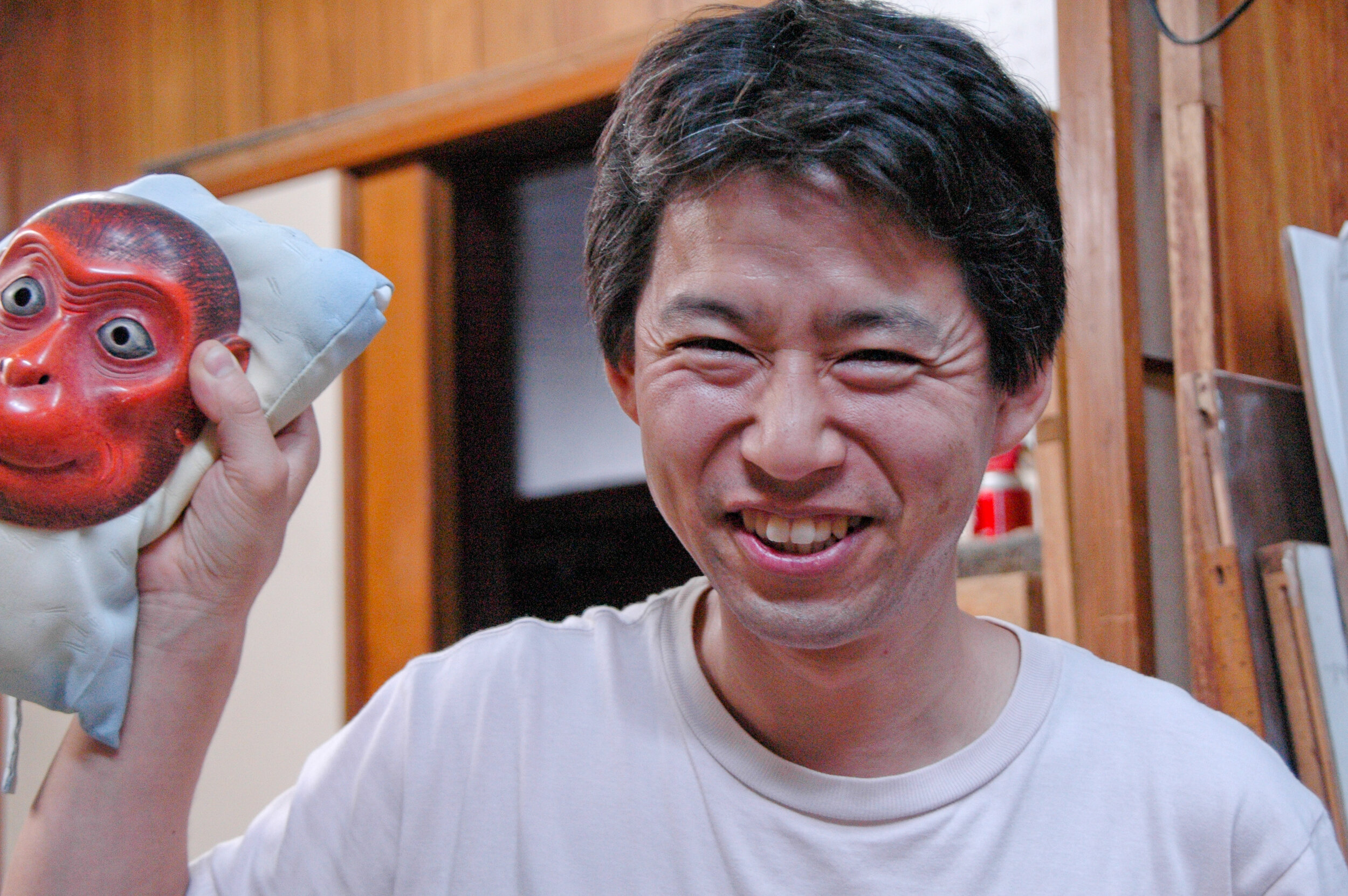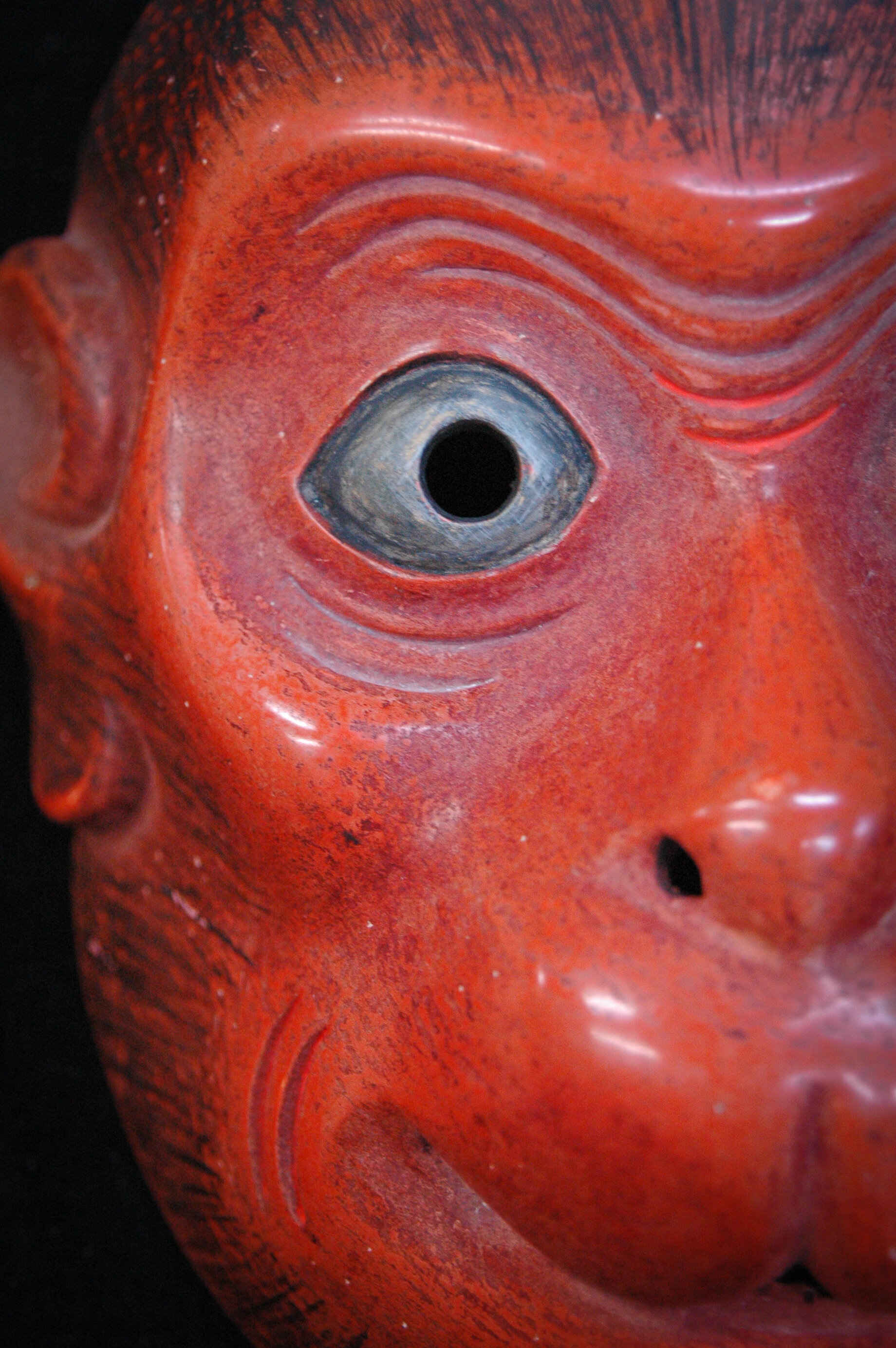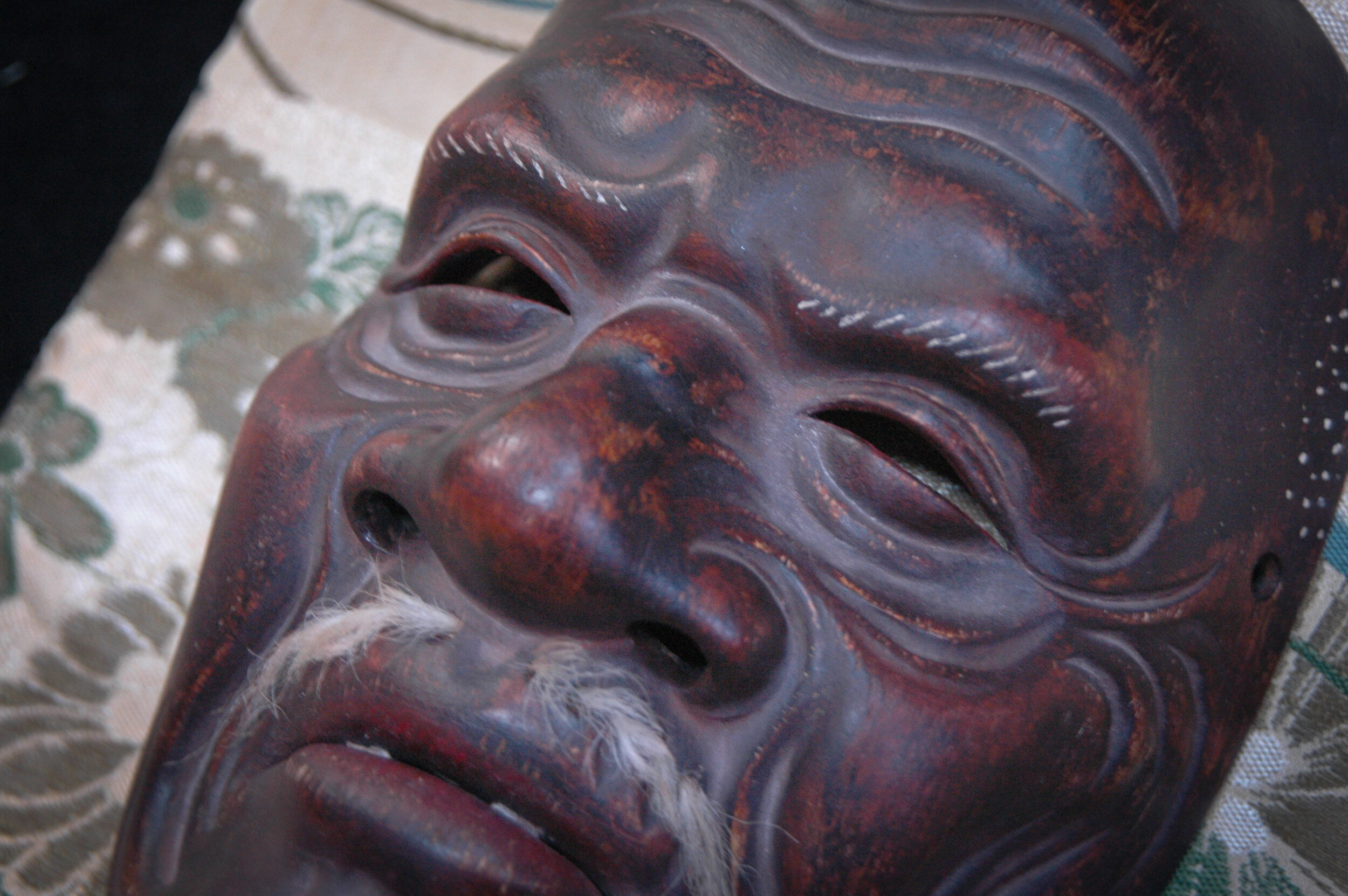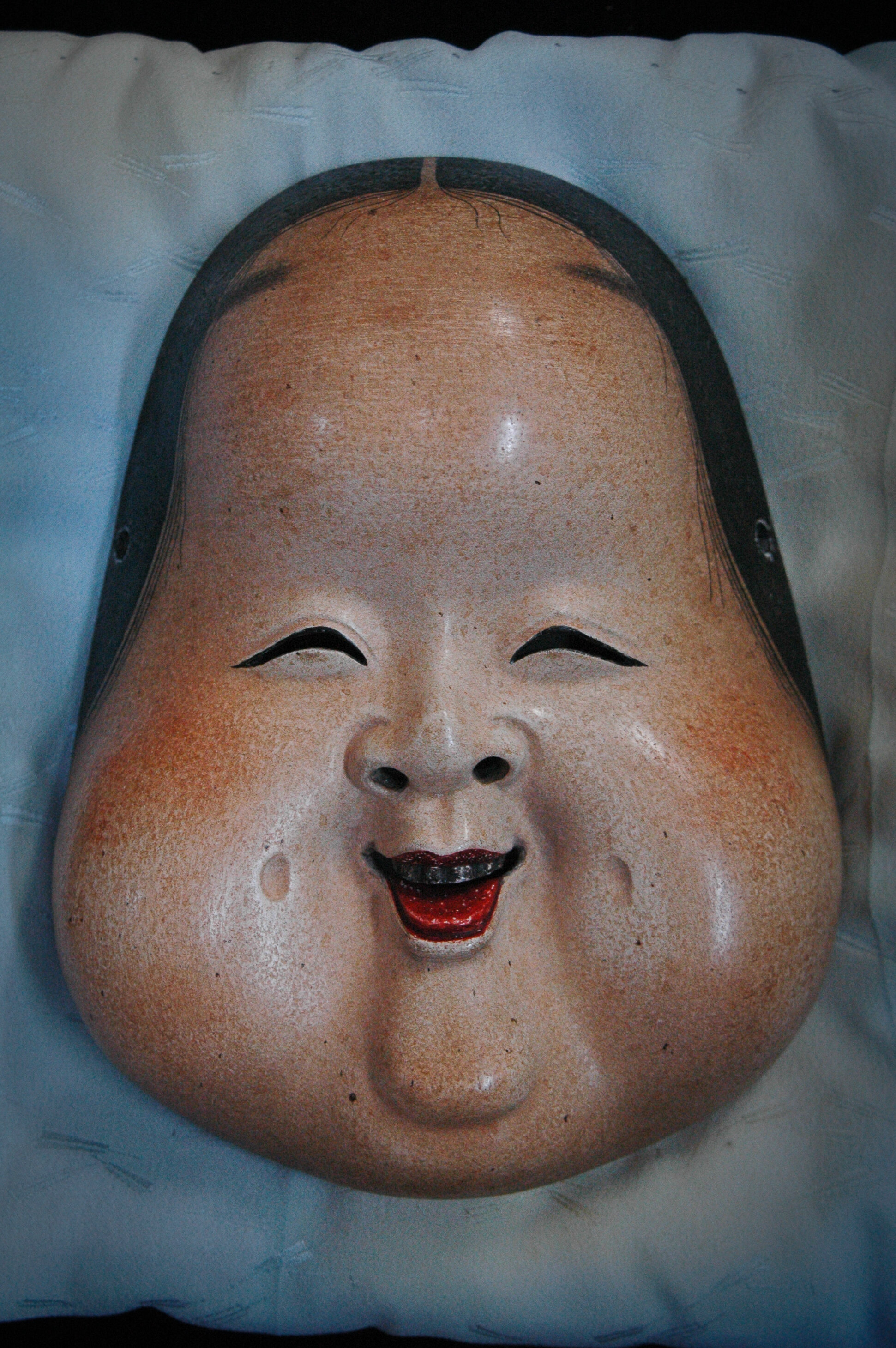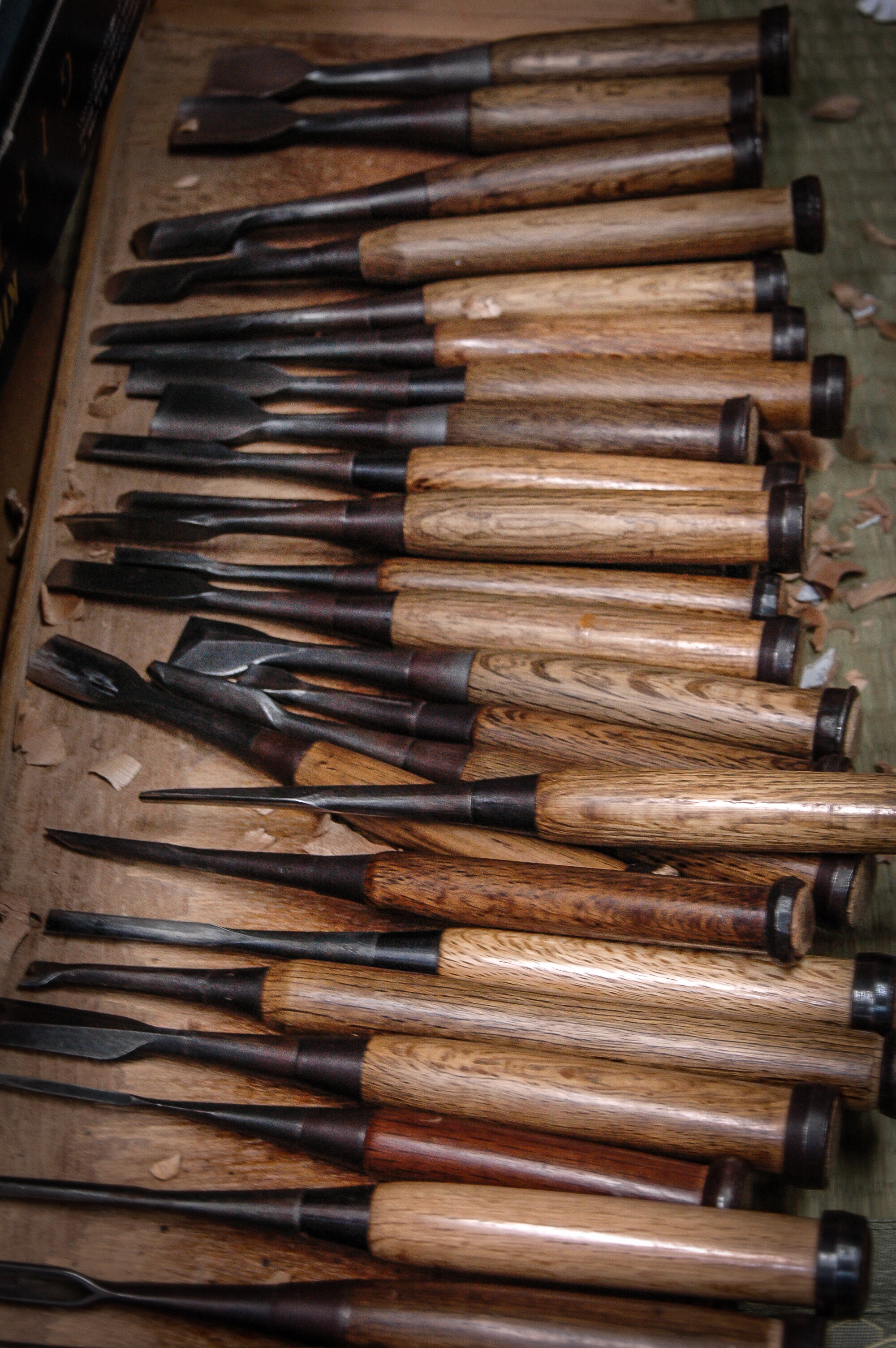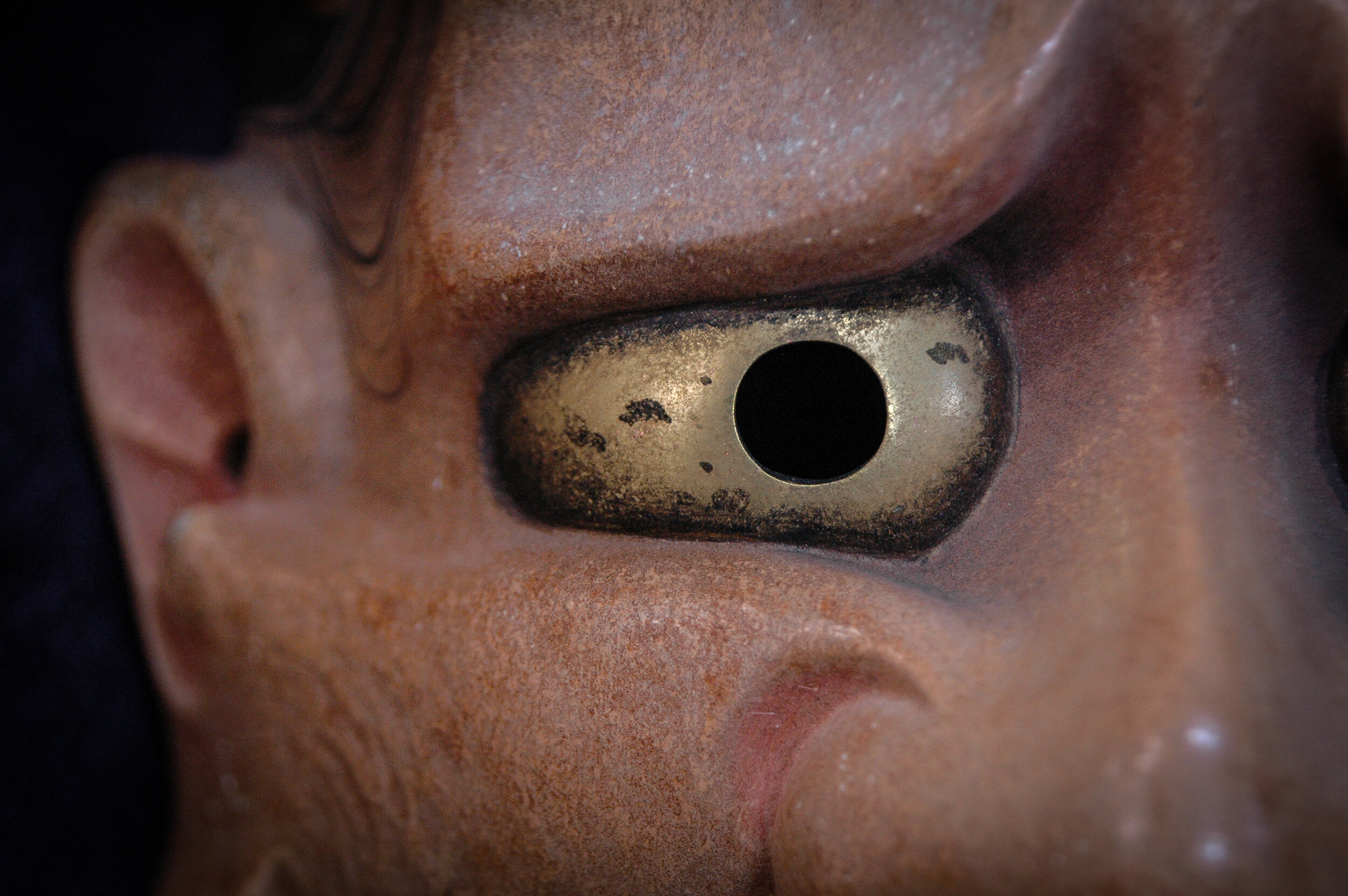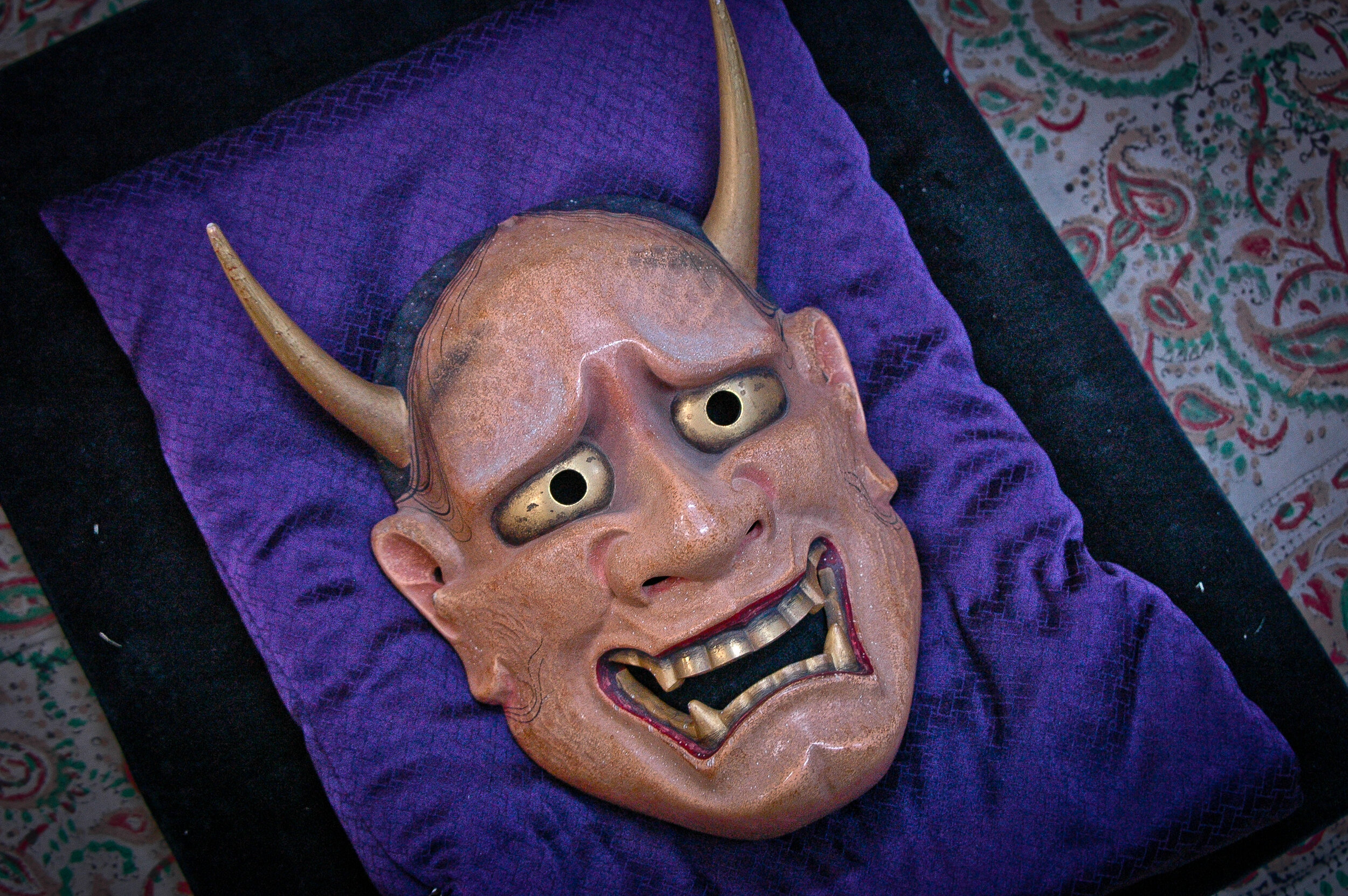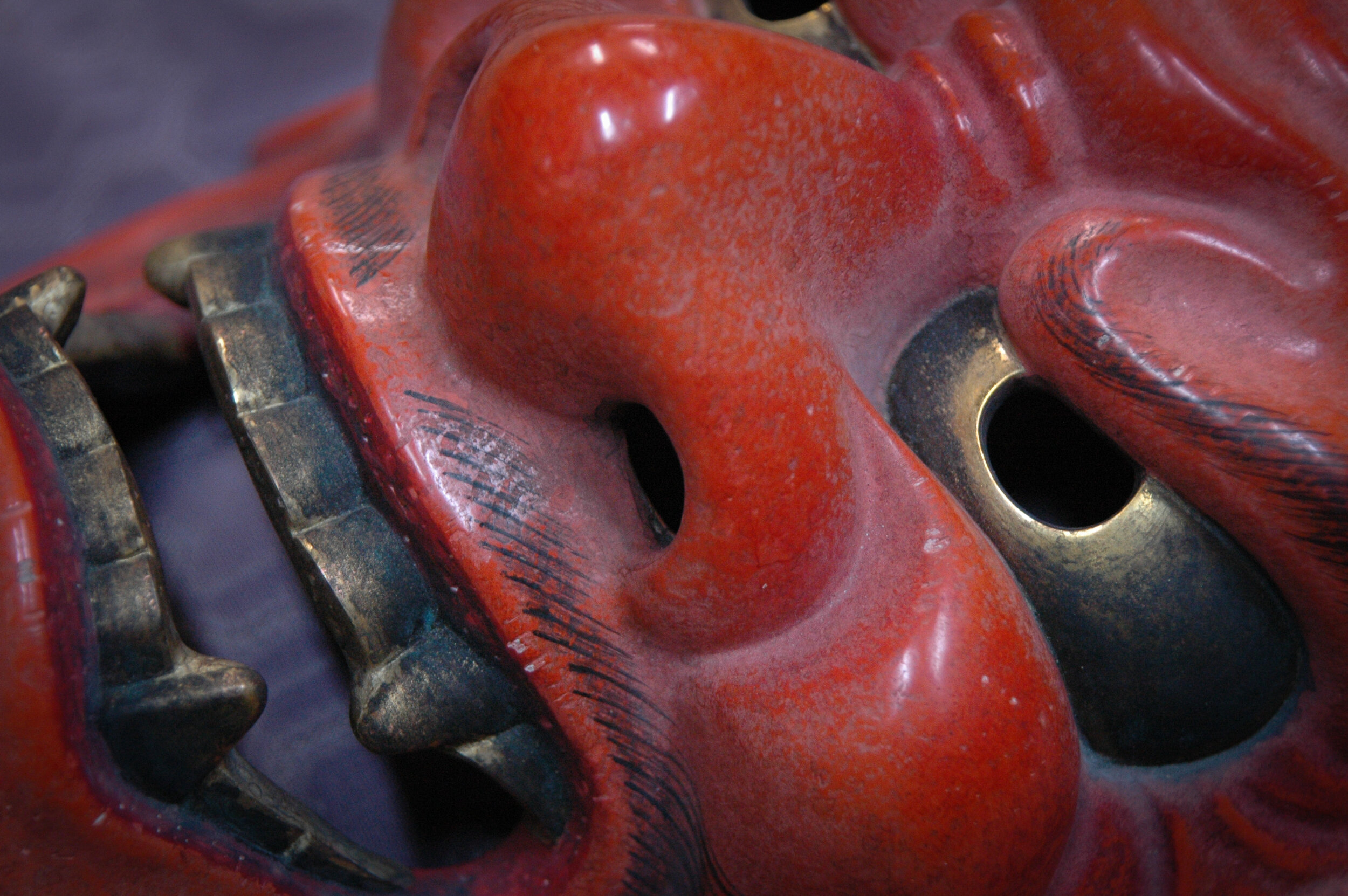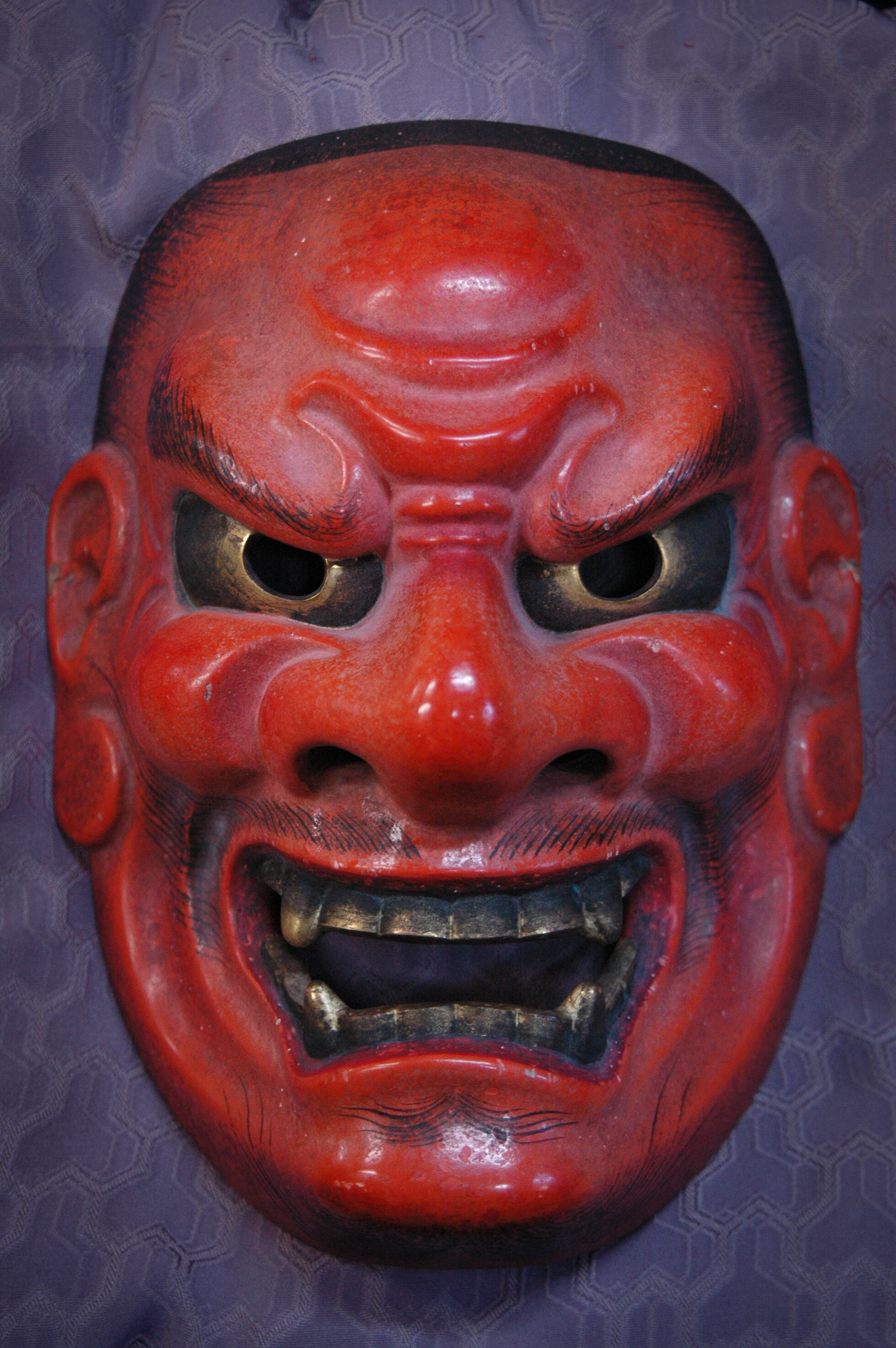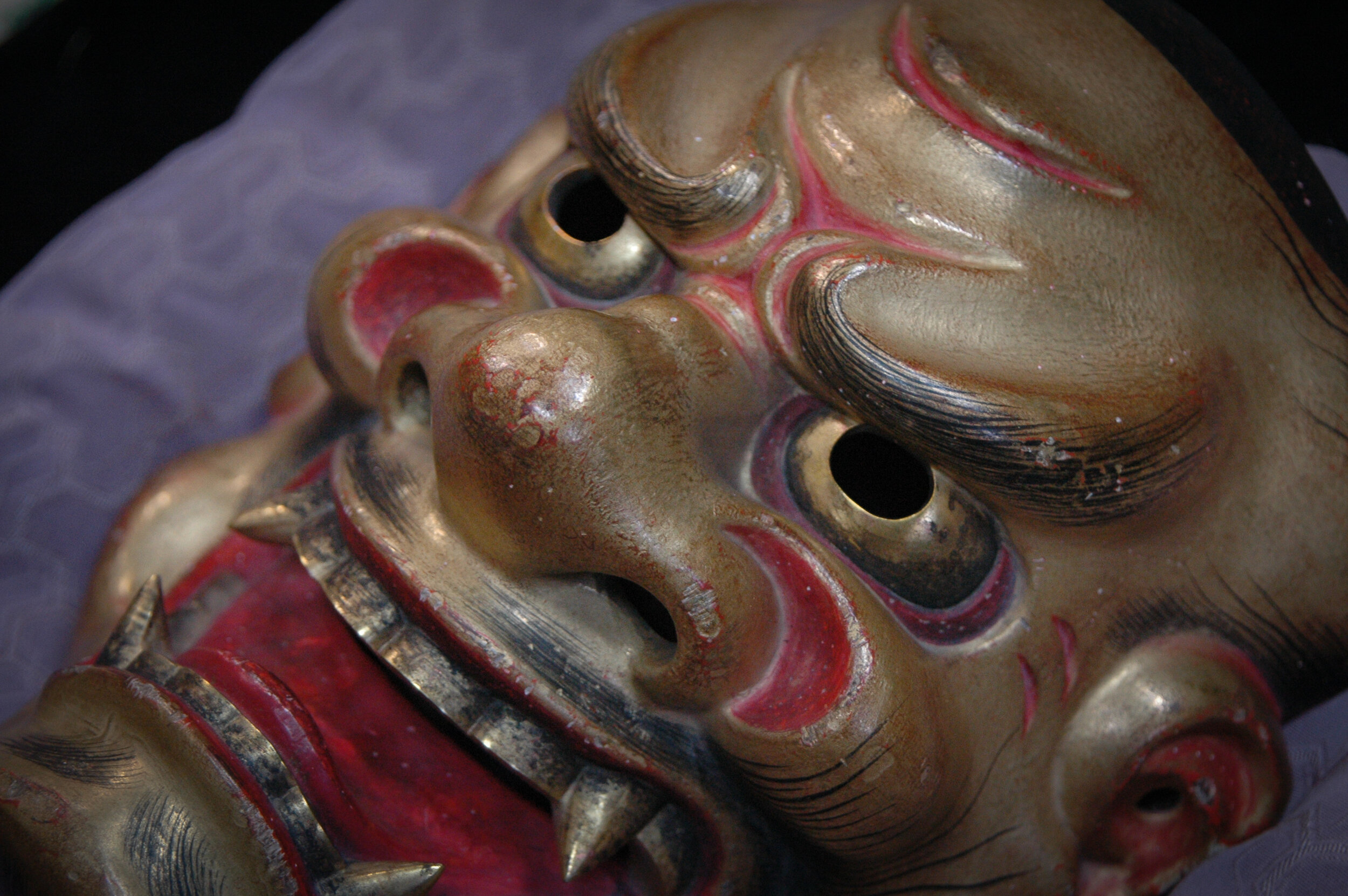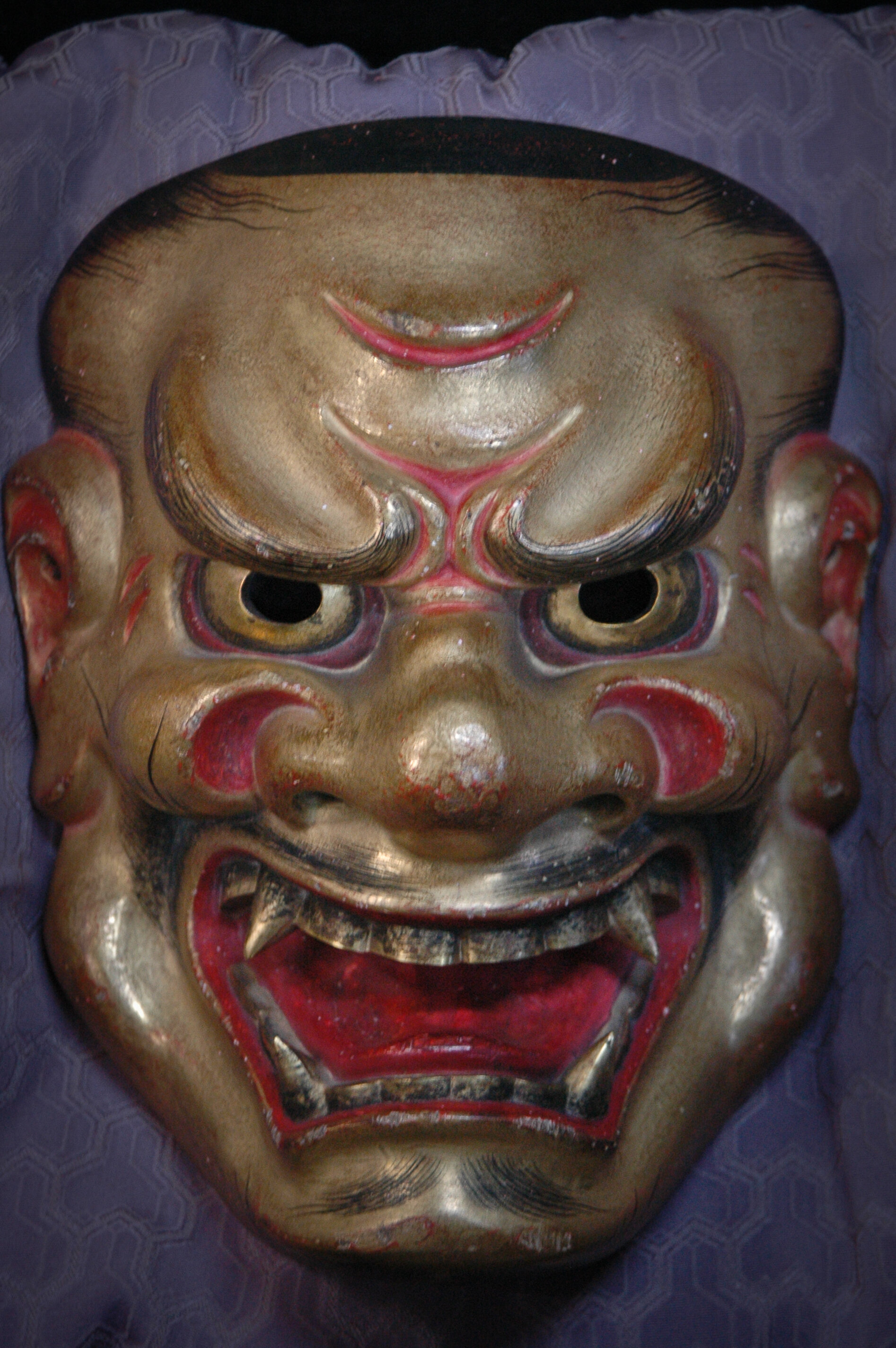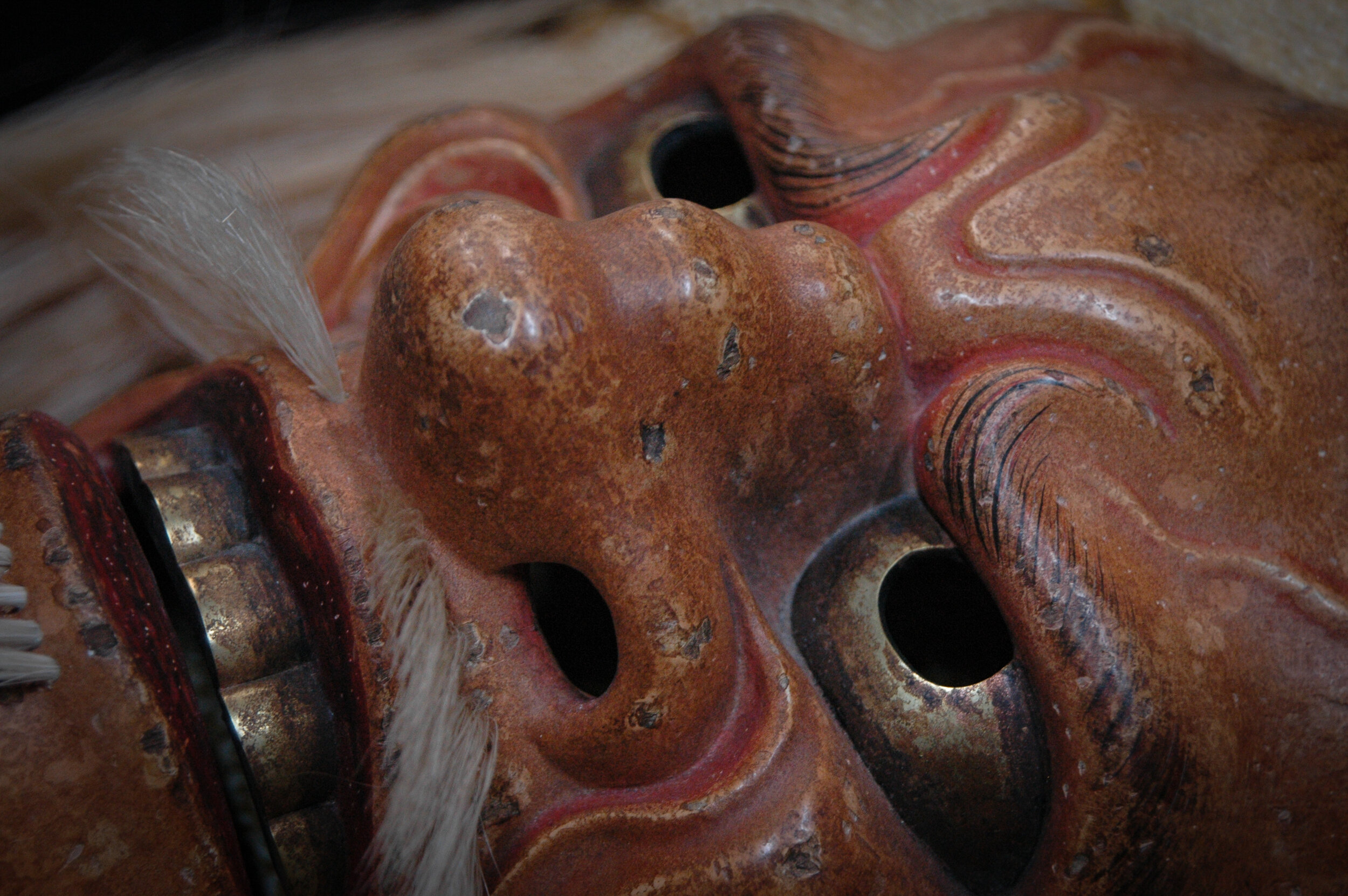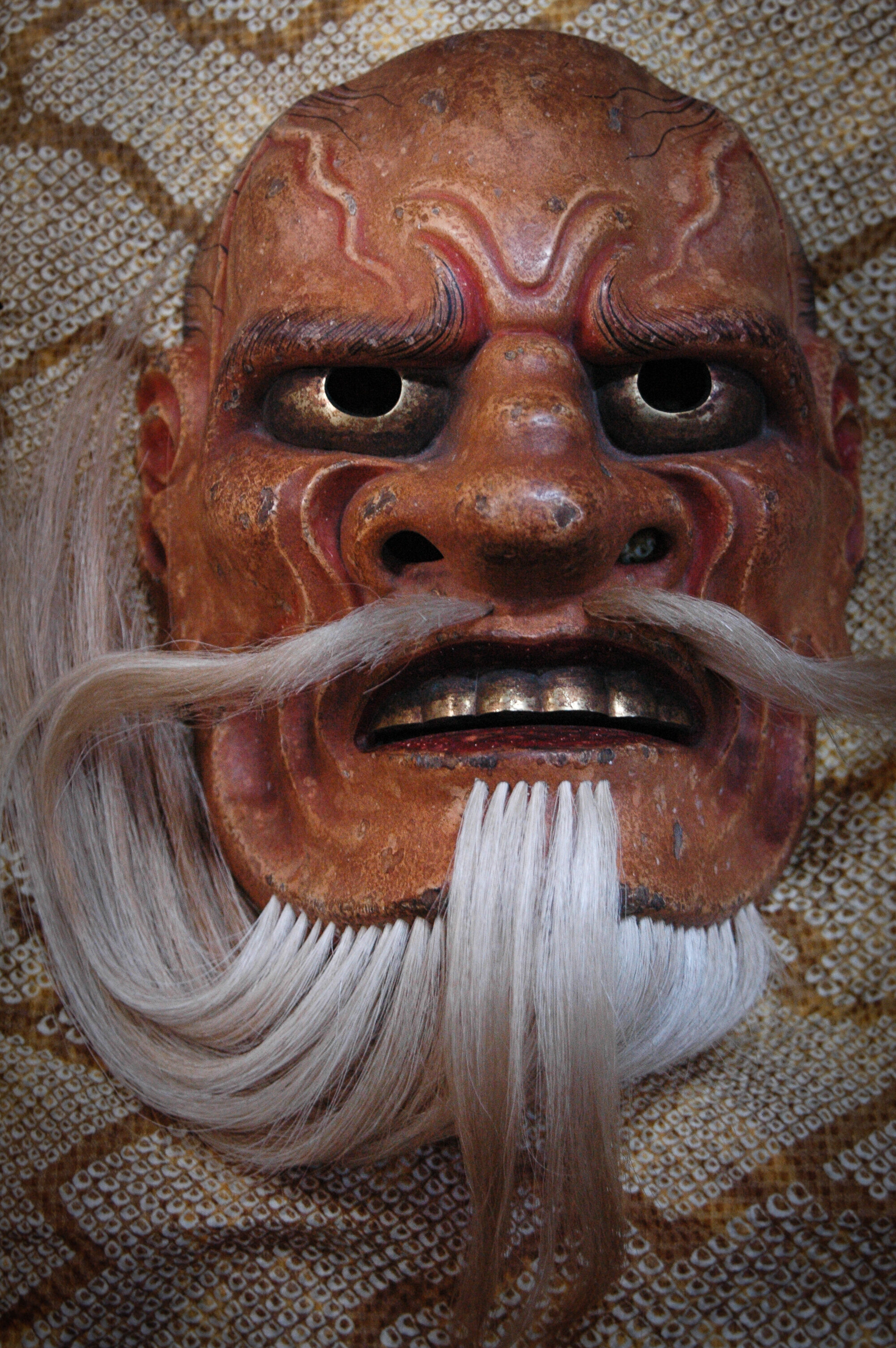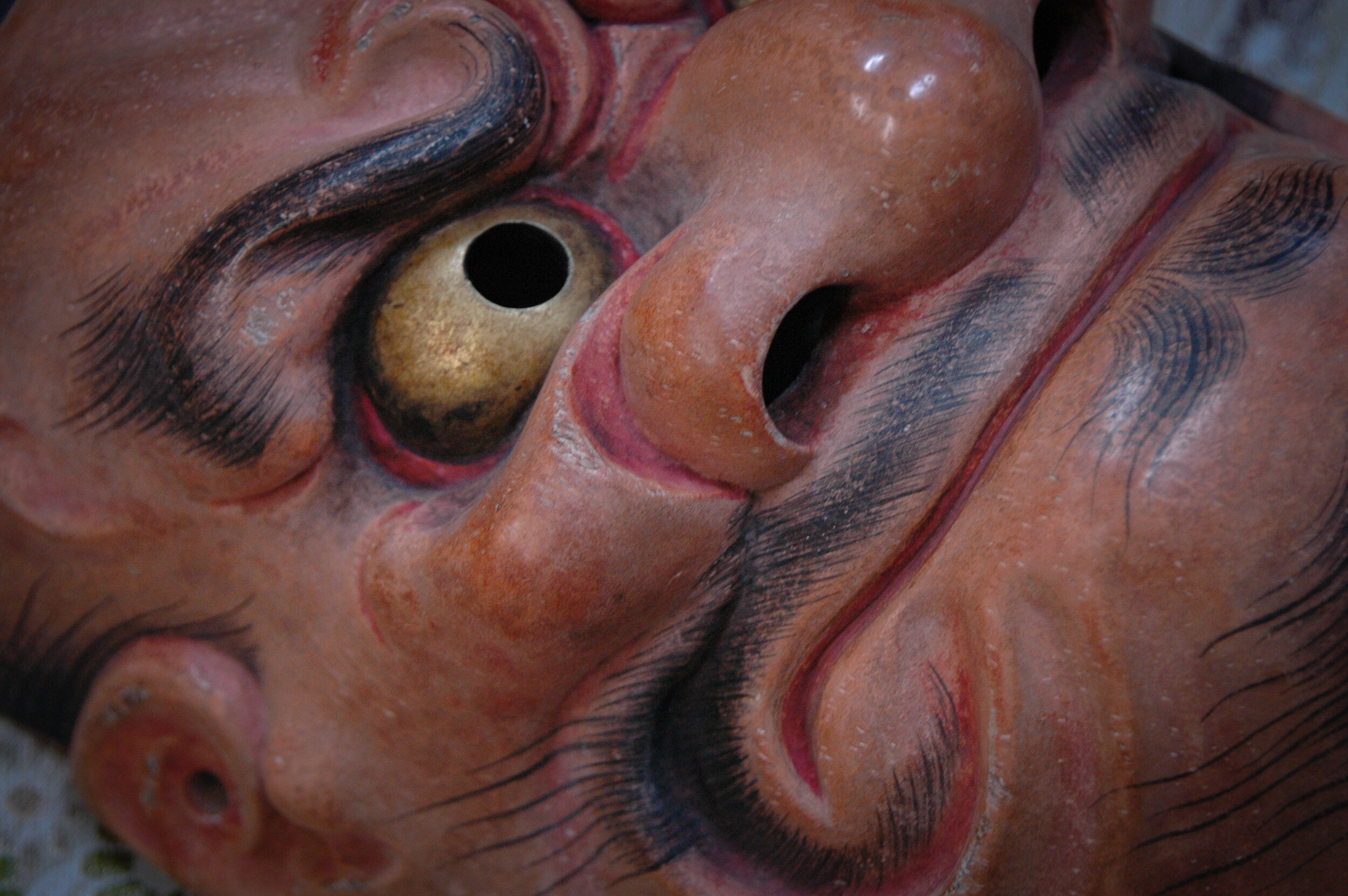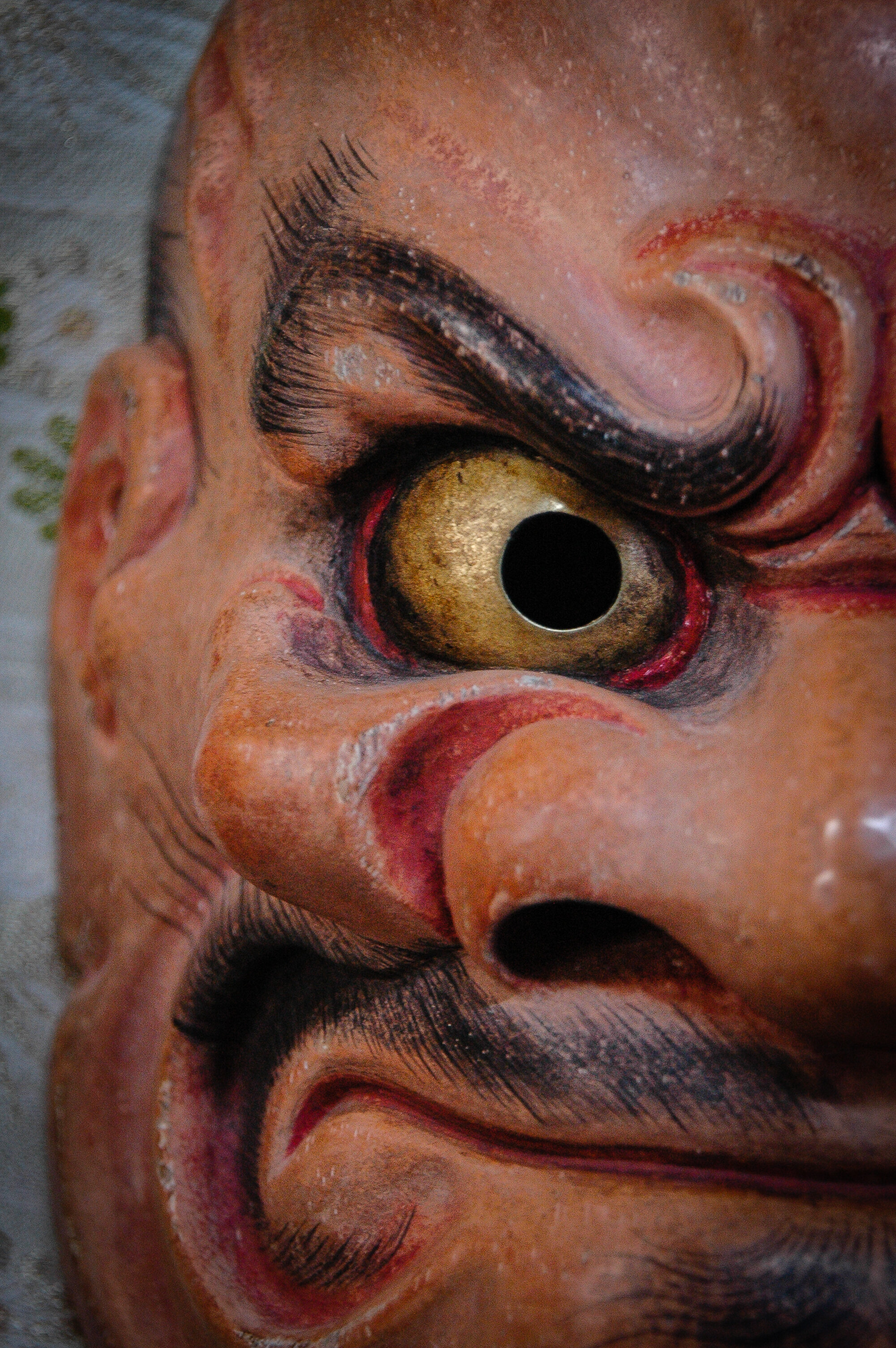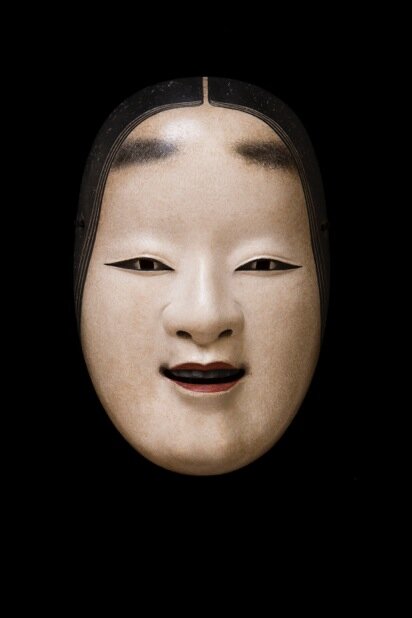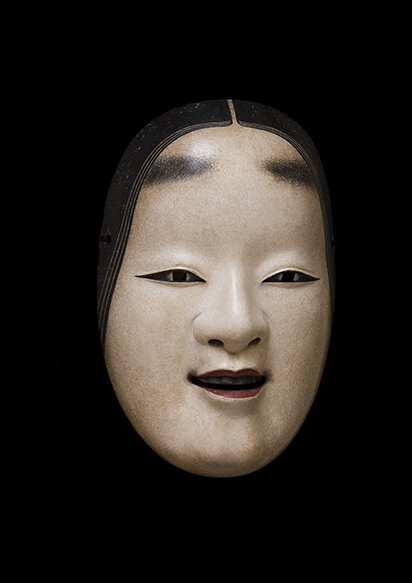Kitazawa Hideta: MASK MAKER
北澤 秀太 • 能面師
Masks grow from a deep knowledge and thorough mastery of the centuries-old techniques of traditional mask-making. Mr. Kitazawa’s interaction with playwrights, actors and directors leads him to the creation of forms that fit their vision. A single block of hinoki (Japanese cypress) is chosen, and after preparing a clay model, chisel is laid to grain. Meticulously painted watercolors are applied to gesso-coated wood, and the actor brings the mask to life on stage.
KITAZAWA HIDETA is a second-generation woodcarving artist from Tokyo. After graduating from the Tokyo University of Agriculture and Technology with a major in Forest Management, he went on to begin intensive woodcarving studies with his father Kitazawa Ikkyou (a Shinto shrine carver.) In 1993 he began carving masks under the guidance of master artisan Michihiko Ito.
His traditional and contemporary noh and kyôgen masks have been exhibited and used in performance in Japan, Singapore, China, Ireland, France, England and the United States. An affiliated artist with Theatre Nohgaku, he has designed and carved new masks for Theatre Nohgaku’s performances of Pine Barrens, Crazy Jane and Pagoda. His traditional shakumi mask was used in the English-language production of the classical play Sumida River by the University of Hawaii where he also conducted an intensive mask-carving workshop.
Mr. Kitazawa has conducted numerous workshops and exhibitions including the Victoria & Albert Museum, London; Pitt Rivers Museum, Oxford; Peking University and the Central Academy for Drama, Beijing. His masks were also featured in a two-month exhibition at the East-West Center Gallery in Honolulu. In spring 2009, as a part of a Theatre Nohgaku residency he taught maskmaking at Southern Methodist University, and also exhibited for the Crow Collection of Asian Art both in Dallas.
He has received numerous awards including the Outstanding Youth Artesian Award for Tokyo 1997 and the Yokohama Noh Drama Hall Director's Prize in 2003. His carvings of Shinto floats and o-mikoshi are in current use throughout Japan's Kanto area. His masks are used extensively by a number of prominent noh and kyogen professionals.
Mr. Kitazawa has worked extensively with non-Japanese performers and artists to create evocative contemporary masks.
能面
Masks for Sale
All Masks are hand carved using traditional methods, come with custom sewn silk storage bag and handcrafted paulownia storage box.
Prices do not include shipping costs.
Ko-omote. Kitazawa Hideta. 2014.
Ko-omote (2014)
Noh mask
Ko-omote is a delicate and elegant mask depicting the beauty of a young woman. The Ko-omote is perhaps the most iconographic representation of noh masks. This piece would be used for performances in works such as Kochō, Matsukaze, Yuya, and Tomoe.
Although this is a museum grade mask, it was used in the performance of Izutsu at the Kita Noh Theater by Matsui Akira (designated an Important Intangible Cultural Asset by the Japanese Government) in 2014. An example of mugen noh (where the waki encounters a spirit), Izutsu recounts a story from the Ise Monogatari of the Lady Izutsu and her deep and abiding love for her childhood sweetheart Ariwara no Narihira.
Construction:
• Traditional Pattern
• Hand selected single block of aged hinoki wood
• Powdered oyster shell and glue gesso coat
• Hand-mixed mineral based water-color
Dimensions: 212cm X 136cm X 71cm
PRICE ¥385,000 JPY
Ko-omote. Kitazawa Hideta. 2014.
Ko-omote. Kitazawa Hideta. 2014.
Hakushiki-jo. Kitazawa Hideta. 2020.
Hakushiki-jo (2020)
Noh mask
With a unique hinged jaw, the depiction of Hakushiki-jo predates the establishment of noh as a performance form. Used in the ritual piece Okina, it is the mask of a benevolent deity meant to ensure and invoke peace, prosperity, and bountiful crops.
More a sacred rite than actual performance, Okina is typically performed with other felicitous pieces at the start of the new year or other auspicious occasions. The actor who wears the Hakushiki-jo mask undertakes purification rituals in preparation, and during the course of the rite is understood to become a manifestation of the deity.
Construction:
• Traditional Pattern
• Hand selected single block of aged linden wood
• Natural fiber beard and eyebrows (horse)
• Hand-mixed mineral based watercolor final coat
Dimensions: 190cm X 156cm X 85cm
PRICE ¥385,000 JPY
Hakushiki-jo. Kitazawa Hideta. 2020.
Oto. Kitazawa Hideta. 2020.
Oto (2020)
Kyōgen mask
Sometimes thought of as a parody of the upper-class elegance of the ko-omote mask, Oto depicts a charming round-faced young woman. This kyōgen mask may also be used by characters who are disguising themselves as the mercy deity Jizo.
Kyōgen is an allied craft with noh, developing independently in the 1400’s. Expressed as either ai- kyōgen (appearing within a noh performance) or hon-kyōgen (independent), performances are spoken word and modestly comic in nature, using a range of stock characters with a narrative often focusing on the interactions of country people and their more sophisticated 15th century urban counterparts.
Construction:
• Traditional Pattern
• Hand selected single block of aged hinoki wood
• Hand-mixed mineral based watercolor final coat
Dimensions:
184cm X 145cm X 75cm
PRICE ¥275,000 JPY
CLICK HERE TO INQUIRE ABOUT THIS MASK
Hannya. Kitazawa Hideta. 2014.
Hannya (2014) SOLD
Noh mask
Hannya, along with ko-omote, are perhaps the most iconic of noh masks. Depicting an aggrieved female demon or agitated spirit, it appears in such performances as Kurozuka, Aoi no Ue, Momijigari, and Dōjō-ji. Though fierce in its expression, it is meant to display the torments of jealousy and sorrow.
Although this is a museum grade mask, it was used in performance of Kurozuka in a site-specific performance at Adachigahara (Fukushima) by Matsui Akira (designated an Important Intangible Cultural Asset by the Japanese Government) in 2014.
In Kurozuka, the mask takes the form of a malevolent and isolated oni (an ogre or demon) living alone in a hut on the plains of Adachi. A group of wandering monks come upon the hut, and the oni presents itself sympathetically as human in the first half of the work - but is then revealed as a true monster intent on consuming whomever they meet.
Construction:
• Traditional Pattern
• Hand selected single block aged hinoki wood
• gold leaf covered copper
• Hand-mixed mineral based watercolor
Dimensions: 207cm X 168cm X 92cm (height not including horns)
PRICE ¥440,000 JPY
CLICK HERE TO INQUIRE ABOUT THIS MASK
[ n.b. Though recently sold, Mr. Kitazawa is working on a copy of this piece that will be available by early January 2021 ]
能面
Commissioned Work
Commissioning a traditional mask
Interested in mask that isn’t listed here? Mr. Kitazawa is available to create new traditional masks.
Commission process:
• Submit introduction letter including a the name of a traditional mask.
• Negotiations on construction time (please allow a minimum of 3 months) and cost
• A deposit of ¥100,000 is required prior to commencing fabrication
• Artists sketch and consultation with client
• Clay model creation and consultation with client
• Carving begins
• Client receives photographs of finished project
• Product ships upon receipt of remainder of negotiated fee.
CLICK HERE TO INQUIRE ABOUT COMMISSION OF A TRADITIONAL MASK
Commissioning an original new work
Kitazawa is available to create new, original, noh-inspired mask creations.
Commission process:
• Submit introduction letter including a minimum of 5 source material images.
• Negotiations on construction time (please allow a minimum of 3 months) and cost
• A deposit of ¥100,000 is required prior to commencing fabrication
• Artists sketch and consultation with client
• Clay model creation and consultation with client
• Carving begins
• Client receives photographs of finished project
• Product ships upon receipt of remainder of negotiated fee.
CLICK HERE TO INQUIRE ABOUT COMMISSION OF AN ORIGINAL NEW WORK
